- Understanding Strawberry Fertilisation
- 1. Essential nutrients for strawberries
- 2. Understanding nutrient uptake
- 3. Timing and application of fertilisers
- 4. Adjusting nutrient ratios
- 5. Organic vs. synthetic fertilisers
- Conclusion
- Optimizing Fertilisation for Bigger Berries
- Introduction
- Understanding the Nutrient Needs of Strawberries
- Choosing the Right Fertilizer
- Fertilization Timing and Application
- Additional Tips for Optimizing Strawberry Fertilization
- Conclusion
- The Importance of Nutrients
- Choosing the Right Fertilisers
- 1. Macronutrients
- 2. Secondary Nutrients
- 3. Micronutrients
- Understanding Nitrogen’s Role
- Enhancing Berry Size with Phosphorus
- Benefits of Phosphorus for Berry Size
- Applying Phosphorus Fertilizers
- Potassium’s Impact on Berry Development
- 1. Cell Division and Enlargement
- 2. Sugar Transport and Accumulation
- 3. Water Regulation
- 4. Disease Resistance
- 5. Fruit Color and Shelf Life
- The Role of Micronutrients
- Timing and Application Techniques
- 1. Pre-Planting Preparation
- 2. Pre-Bloom Application
- 3. Bloom and Fruit Development
- 4. Post-Harvest Care
- 5. Irrigation Techniques
- 6. Mulching
- Question-answer:
- What nutrients are essential for strawberry fertilization?
- How should nitrogen be applied for strawberry fertilization?
- What is the recommended phosphorus level for strawberries?
- Why is calcium important for strawberry fertilization?
- Can excess fertilizer negatively affect strawberry berries?
- Video: Growing Strawberries (Part 2): Pruning, Pests, and Harvesting
When it comes to growing strawberries, bigger berries are always better. To achieve this, it is essential to provide the plant with the right nutrients throughout its growth cycle. Proper fertilisation can make a significant difference in the size, quality, and yield of your strawberries. But what nutrients should you use to optimize strawberry fertilisation?
One crucial nutrient for strawberry plants is nitrogen. Nitrogen is responsible for promoting healthy leaf and stem growth, which in turn contributes to larger berry size. However, it is important to find the right balance, as too much nitrogen can result in excessive vegetative growth at the expense of fruit production. Additionally, phosphorus and potassium are vital for supporting overall plant health and fruit development.
Furthermore, micronutrients also play a crucial role in strawberry fertilisation. These include zinc, iron, manganese, copper, and boron. Although they are needed in smaller quantities compared to macronutrients like nitrogen, phosphorus, and potassium, micronutrients are essential for optimal plant growth and development. They help with various processes, such as photosynthesis, enzyme activation, and nutrient uptake.
In conclusion, to optimize strawberry fertilisation and promote bigger berries, it is essential to provide the plant with a balanced combination of macronutrients and micronutrients. Nitrogen, phosphorus, and potassium are crucial for overall plant health and fruit development, while micronutrients such as zinc, iron, manganese, copper, and boron play a vital role in supporting essential plant processes. By using the right nutrients, you can ensure your strawberries reach their full potential, resulting in larger, more delicious berries.
Understanding Strawberry Fertilisation
Proper fertilisation is essential for the successful growth and development of strawberries. By understanding the nutrient requirements of strawberries, you can optimize the fertilisation process and promote bigger and healthier berries.
1. Essential nutrients for strawberries
Strawberries have specific nutrient requirements that need to be met in order to ensure optimal growth. The primary nutrients required by strawberries are nitrogen (N), phosphorus (P), and potassium (K), often referred to as NPK. In addition to NPK, strawberries also require secondary nutrients such as calcium (Ca), magnesium (Mg), and sulfur (S), as well as micronutrients like iron (Fe), manganese (Mn), and zinc (Zn).
2. Understanding nutrient uptake
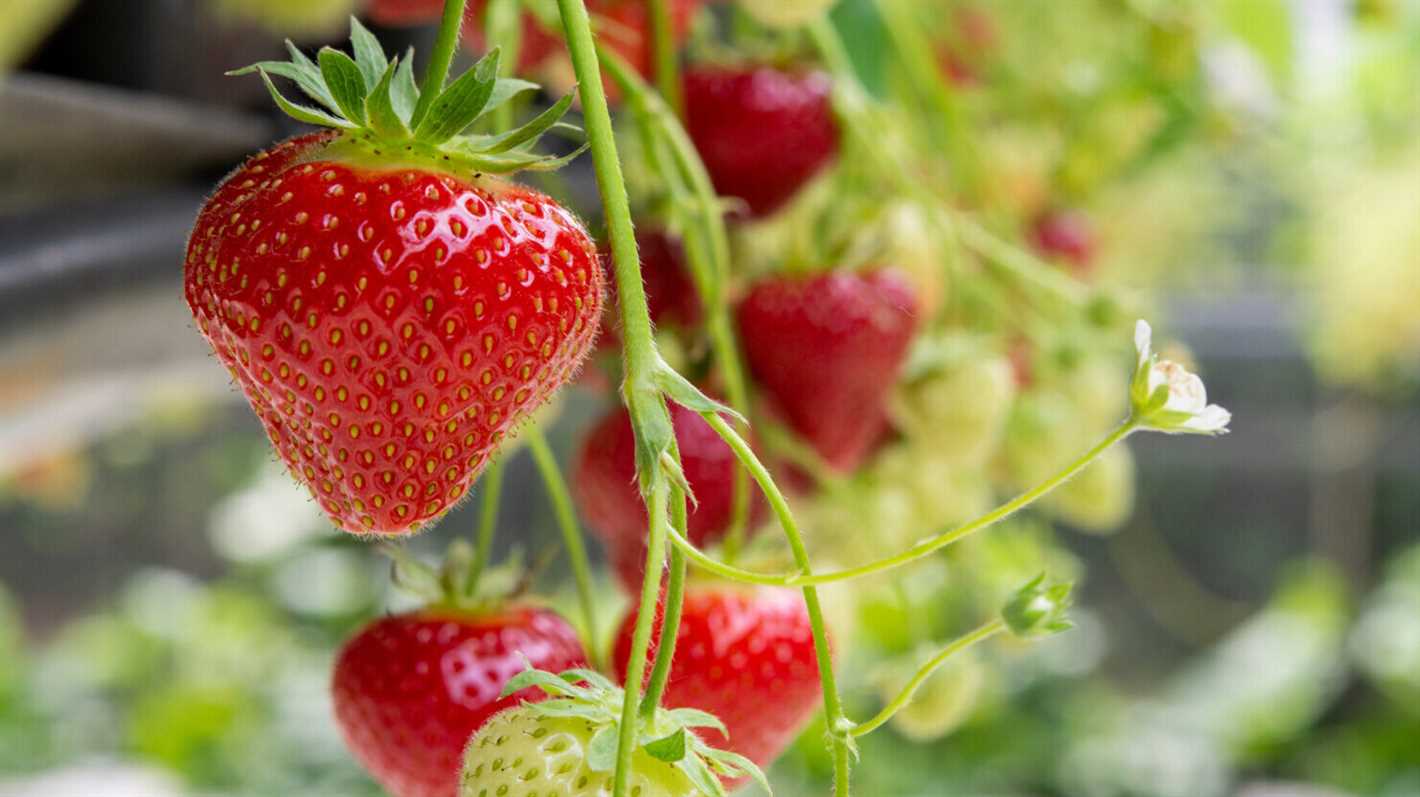
Strawberries have a shallow root system, which means they are more efficient at taking up nutrients from the topsoil. However, they still need a well-balanced nutrient supply throughout the growing season. Nutrients can be absorbed by strawberries through both root uptake and foliar uptake. Root uptake occurs when the nutrients are dissolved in the soil water and taken up by the roots, while foliar uptake happens when the nutrients are sprayed onto the leaves and absorbed directly.
3. Timing and application of fertilisers
Timing is crucial when it comes to fertiliser application for strawberries. The plants have different nutrient requirements at different stages of growth, so it’s important to provide the right nutrients at the right time. Pre-plant fertilisation is typically done before planting the strawberries, incorporating nutrients into the soil. During the growing season, side-dressing fertilisation can be done by applying granular or liquid fertilisers around the plants. Foliar application is another effective method for providing nutrients directly to the leaves.
4. Adjusting nutrient ratios
The ideal nutrient ratios for strawberries can vary depending on factors such as soil type, variety, and growing conditions. It’s important to monitor the nutrient levels in the soil and adjust the fertiliser applications accordingly. A soil test can help determine the nutrient deficiencies and guide the adjustments needed. It’s also important to note that excessive fertilisation can lead to nutrient imbalances and environmental pollution, so it’s crucial to follow recommended guidelines and use fertilisers judiciously.
5. Organic vs. synthetic fertilisers
Both organic and synthetic fertilisers can be used for strawberry fertilisation. Organic fertilisers, such as compost and manure, provide slow-release nutrients and improve soil structure and fertility. On the other hand, synthetic fertilisers offer precise nutrient ratios and fast-release nutrients. The choice between organic and synthetic fertilisers often depends on personal preferences, cost, and environmental considerations.
Conclusion
Understanding strawberry fertilisation is vital for achieving bigger and better berries. By providing the necessary nutrients at the right time and in the appropriate ratios, you can optimise the growth and development of strawberries and enhance their overall quality and yield. Whether you choose organic or synthetic fertilisers, remember to constantly monitor and adjust the fertiliser applications based on the specific needs of your strawberry plants.
Optimizing Fertilisation for Bigger Berries
Introduction
Strawberries are a popular and delicious fruit, but growing them successfully requires careful attention to their nutrient needs. In order to produce bigger and more flavorful berries, it is important to optimize fertilization practices.
Understanding the Nutrient Needs of Strawberries
Strawberries require several key nutrients in order to thrive and produce large berries. These nutrients include nitrogen, phosphorus, potassium, and various micronutrients such as iron, manganese, and zinc.
It is important to provide strawberries with a well-balanced fertilizer that contains these essential nutrients. Additionally, the pH level of the soil should be maintained between 5.5 and 6.5 for optimal nutrient uptake.
Choosing the Right Fertilizer
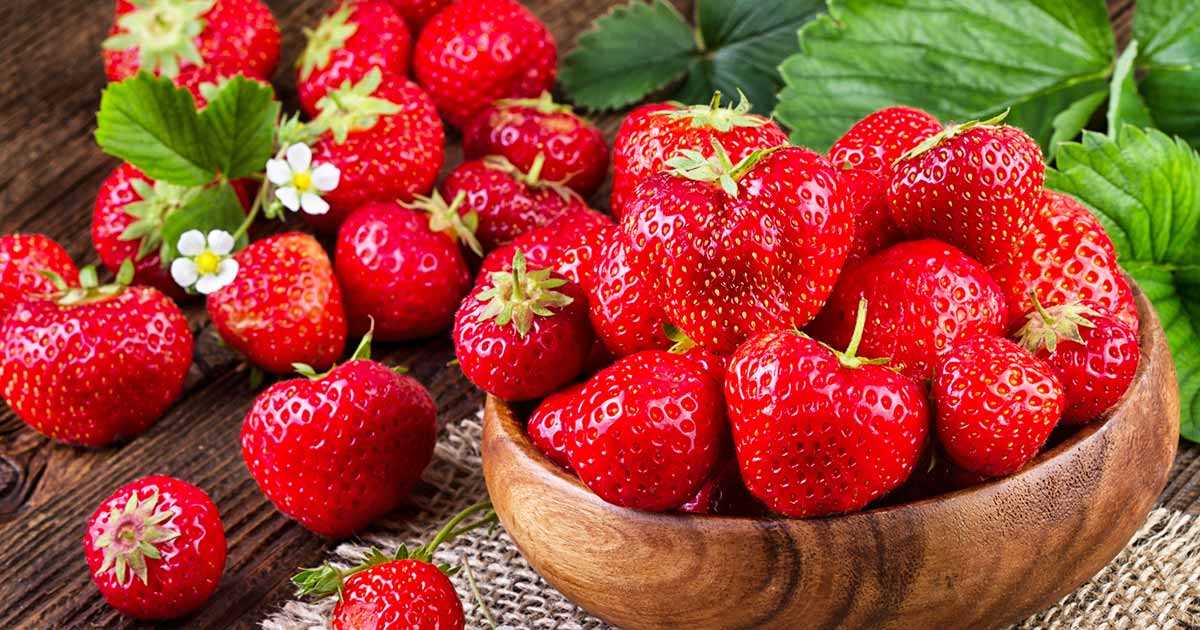
When selecting a fertilizer for strawberries, it is important to consider the nutrient ratios. A balanced fertilizer with an NPK ratio of 10-10-10 or 14-14-14 is suitable for most strawberry varieties.
However, it can be beneficial to adjust the nutrient levels to meet the specific needs of your soil and plants. For example, if your soil is lacking in nitrogen, you can use a fertilizer with a higher nitrogen content.
In addition to the macronutrients, it is also important to ensure that the fertilizer contains micronutrients. These micronutrients are essential for proper plant growth and fruit development.
Fertilization Timing and Application
Strawberries have specific fertilization requirements throughout the growing season. It is best to apply a balanced fertilizer immediately after planting the strawberries, and then continue with regular applications every 4-6 weeks.
During the flowering and fruiting stages, it is important to reduce the nitrogen levels and increase the potassium levels. This will help promote fruit development and improve the flavor of the berries.
It is important to follow the recommended application rates provided by the fertilizer manufacturer. Over-fertilization can result in excessive vegetative growth at the expense of fruit production.
Additional Tips for Optimizing Strawberry Fertilization
- Monitor soil moisture levels and provide adequate irrigation to prevent nutrient leaching.
- Avoid fertilizing strawberries during periods of extreme heat or drought to prevent stress on the plants.
- Regularly assess the nutrient levels in the soil through soil testing, and make adjustments as necessary.
Conclusion
Optimizing fertilization for bigger strawberries requires a balanced fertilizer with the right nutrient ratios, micronutrients, and proper timing of applications. By providing strawberries with the nutrients they need, you can ensure the production of larger and more flavorful berries.
The Importance of Nutrients

The availability and proper balance of nutrients play a vital role in the growth and development of strawberries. Nutrients are essential for the overall health of the plants, as well as the size and quality of the berries they produce.
Macronutrients
- Nitrogen (N): Nitrogen is a vital macronutrient for strawberry plants as it helps stimulate leaf and stem growth. It is essential for the production of chlorophyll and protein synthesis, which contribute to overall plant vigor.
- Phosphorus (P): Phosphorus is necessary for energy transfer within the plant and is crucial for root development, flowering, and fruit formation. It also plays a role in the overall immune system of the plants.
- Potassium (K): Potassium is instrumental in enhancing fruit quality by improving sugar content and flavor. It also helps with disease resistance and water regulation in plants.
Micronutrients
- Iron (Fe): Iron is essential for the production of chlorophyll, which is responsible for photosynthesis. It promotes healthy leaf development and overall plant metabolism.
- Zinc (Zn): Zinc plays a significant role in the synthesis of growth hormones and enzymes. It is crucial for carbohydrate metabolism and helps improve fruit set.
- Manganese (Mn): Manganese is involved in various enzymatic processes, including photosynthesis and hormone regulation. It aids in the production of chlorophyll and contributes to improved plant growth.
Secondary Nutrients
- Calcium (Ca): Calcium is essential for cell wall development and proper fruit development. It plays a crucial role in preventing disorders such as tip burn and internal fruit rot.
- Magnesium (Mg): Magnesium is a component of chlorophyll and is required for photosynthesis. It plays a role in the production and transfer of energy within the plant.
- Sulfur (S): Sulfur is involved in protein synthesis and the formation of essential enzymes in the plant. It also helps improve nutrient uptake and root development.
A well-balanced and sufficient supply of these nutrients is necessary for the plants to reach their full potential and produce large, healthy strawberries. Regular soil testing and proper fertilization practices can help ensure the optimal nutrient levels for strawberry plants.
Choosing the Right Fertilisers
When it comes to fertilising strawberries to promote larger berries, it is important to choose the right fertilisers that provide the necessary nutrients for optimal growth. Here are some factors to consider when selecting fertilisers:
1. Macronutrients
Macronutrients are essential for plant growth and are required in relatively large amounts. The three primary macronutrients for strawberries are nitrogen, phosphorus, and potassium.
- Nitrogen: Nitrogen promotes leaf and stem growth, which contributes to overall plant size. However, excessive nitrogen can result in excessive leaf growth and reduced fruit production. A balanced nitrogen source should be chosen to avoid overstimulating foliage growth.
- Phosphorus: Phosphorus is important for root development, flowering, and fruiting. It aids in the transfer of energy throughout the plant. Choose a fertiliser with a significant phosphorus content to support root development and fruit formation.
- Potassium: Potassium contributes to overall plant health, disease resistance, and fruit quality. It also plays a role in water regulation within the plant. Look for a fertiliser that contains potassium to ensure optimal plant health.
2. Secondary Nutrients
In addition to macronutrients, strawberries also require secondary nutrients. These include calcium, magnesium, and sulfur. While these nutrients are needed in smaller amounts, they are still important for overall plant health and fruit quality.
- Calcium: Calcium is essential for cell wall development, which promotes fruit firmness and reduces the risk of fruit disorders. Choose a fertiliser that contains calcium to support healthy fruit development.
- Magnesium: Magnesium is necessary for the production of chlorophyll, the pigment responsible for photosynthesis. It also aids in the activation of enzymes involved in energy production. Look for a fertiliser with magnesium to support photosynthesis and overall plant growth.
- Sulfur: Sulfur is important for various plant functions, including the formation of proteins and vitamins. It also plays a role in chlorophyll production. Choose a fertiliser that contains sulfur to ensure adequate nutrient availability.
3. Micronutrients
While strawberries require micronutrients in smaller amounts, they are still essential for plant growth and development. Micronutrients include iron, manganese, zinc, copper, boron, and molybdenum. These nutrients are often included in balanced fertilisers or can be supplied through other means.
When selecting fertilisers for strawberries, it is important to consider the nutrient requirements of the specific variety and the soil conditions. Conducting a soil test can help identify any nutrient deficiencies and guide the selection of fertilisers that meet the specific needs of your strawberry plants.
Remember to follow the instructions provided by the fertiliser manufacturer regarding application rates and timing. Proper fertilisation is crucial for promoting healthy plant growth and maximizing berry size.
Understanding Nitrogen’s Role
Nitrogen is one of the most important nutrients for strawberry plants as it plays a crucial role in their growth and development. It is responsible for many vital functions within the plant, including:
- Promoting leaf and stem growth: Nitrogen is a key component of chlorophyll, the pigment necessary for photosynthesis. Adequate nitrogen levels ensure robust leaf and stem growth, which in turn supports overall plant vigor.
- Aiding in protein synthesis: Nitrogen is an essential building block of proteins, which are involved in many biological processes within the plant. Proteins are necessary for enzyme formation, cell division, and the development of new tissues.
- Enhancing fruit production: Adequate nitrogen levels contribute to improved flower development and higher fruit yields. Nitrogen promotes a balanced distribution of energy between vegetative growth and reproductive development, ensuring the plant can allocate resources efficiently.
However, it is important to maintain a careful balance when applying nitrogen fertilizers to strawberry plants. Excessive nitrogen can have negative impacts, such as:
- Increased susceptibility to diseases and pests
- Delayed flowering and fruit formation
- Reduced fruit quality, with smaller berry size and less sweetness
- Imbalanced nutrient uptake, leading to deficiencies in other essential elements
To optimize strawberry fertilization and achieve bigger berries, it is crucial to monitor nitrogen levels and adjust the application according to plant needs. Regular soil testing and foliar analysis can provide valuable insights into the plant’s nutrient status and guide fertilizer application decisions.
In conclusion, nitrogen plays a crucial role in the growth and development of strawberry plants. It is essential for leaf and stem growth, protein synthesis, and fruit production. However, careful monitoring and adjustment of nitrogen fertilization are necessary to avoid negative effects and optimize berry quality and size.
Enhancing Berry Size with Phosphorus
Phosphorus is an essential nutrient for strawberry plants and plays a crucial role in enhancing berry size. It is involved in various physiological processes, including energy transfer, root development, and flower and fruit formation.
When strawberry plants have an adequate supply of phosphorus, they can allocate more energy towards fruit development, resulting in larger and juicier berries.
Benefits of Phosphorus for Berry Size
- Promotes root growth: Phosphorus helps in the formation of strong and extensive root systems. This allows the plants to acquire more nutrients and water, supporting increased fruit production and size.
- Enhances flower and fruit formation: Phosphorus is essential for the formation of flowers and fruits. It facilitates the development of healthy flower buds, which eventually lead to larger and more abundant berries.
- Improves nutrient availability: Phosphorus plays a crucial role in improving nutrient uptake and availability within the plant. It enhances the efficiency of other nutrients, such as nitrogen and potassium, leading to improved overall plant health and fruit size.
Applying Phosphorus Fertilizers
Applying phosphorus fertilizers at the right time and in the correct amounts is essential for maximizing berry size. It is recommended to conduct a soil test to determine the phosphorus levels and adjust the fertilizer application accordingly.
Some common phosphorus fertilizers used in strawberry cultivation include:
| Fertilizer | Phosphorus Content | Application Method |
|---|---|---|
| Bone meal | 15-30% | Apply evenly around the plants and incorporate into the soil. |
| Rock phosphate | 18-32% | Apply before planting or mix with soil. It is slow-release and provides long-term phosphorus availability. |
| Triple superphosphate | 46-48% | Apply during planting or as a side-dressing. It provides quick-release phosphorus and is readily available for uptake. |
Be cautious not to overapply phosphorus, as excessive amounts can cause nutrient imbalances and negatively impact plant growth. Follow manufacturer instructions and soil test recommendations for optimal results.
By enhancing berry size with phosphorus, you can improve the overall quality and market value of your strawberries. Remember to monitor phosphorus levels and adjust fertilization practices based on the specific needs of your strawberry plants.
Potassium’s Impact on Berry Development
Potassium is a vital nutrient for strawberry plants and plays an essential role in berry development. It is involved in several physiological processes that contribute to the growth and quality of strawberries.
1. Cell Division and Enlargement
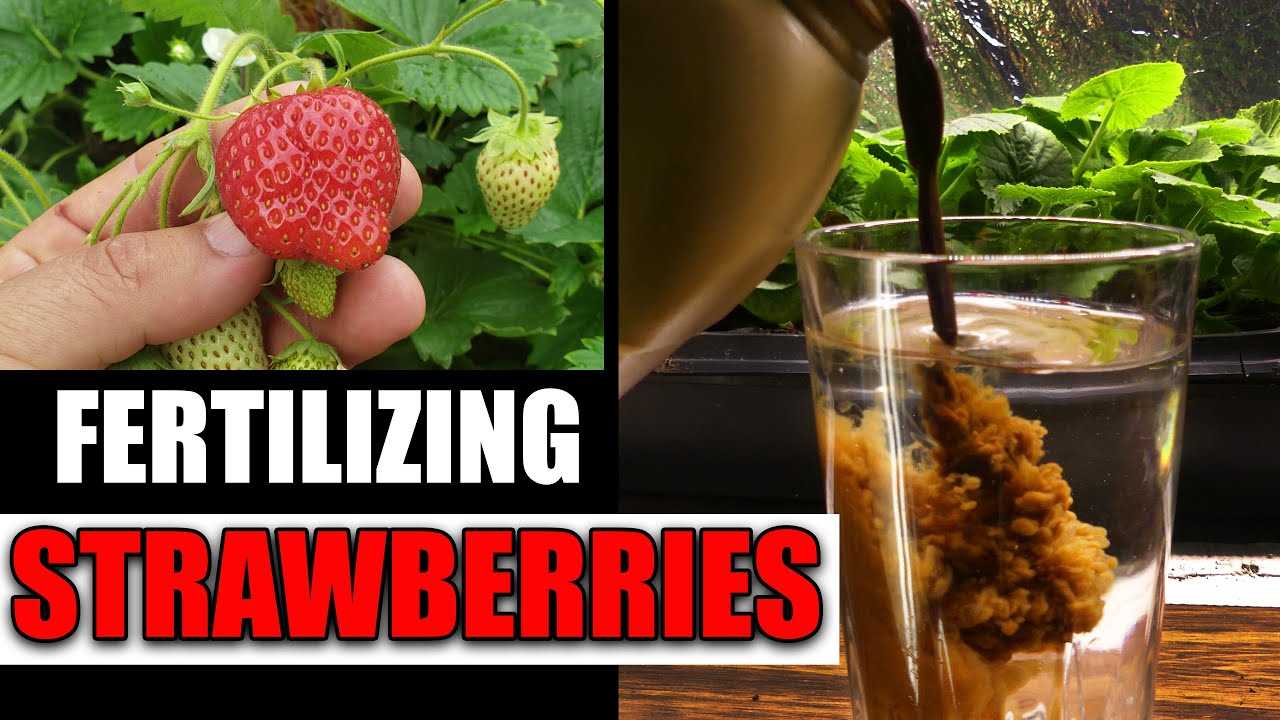
Potassium is crucial for cell division and enlargement, which are essential for berry development. It helps in the formation of new cells and strengthens cell walls, allowing them to expand and accommodate the growing berries.
2. Sugar Transport and Accumulation
Potassium aids in the transport of sugars within the plant. It facilitates the movement of carbohydrates from the leaves to the developing berries, ensuring a sufficient supply of energy for growth and ripening. Additionally, potassium helps in the accumulation of sugars in the berries, enhancing their sweetness.
3. Water Regulation
Potassium plays a significant role in regulating water balance within strawberry plants. It helps control the opening and closing of stomata, the tiny pores on the leaves that facilitate gas exchange. By regulating stomatal function, potassium helps prevent water loss through transpiration, ensuring optimal hydration for the development of plump and juicy berries.
4. Disease Resistance
Adequate potassium levels in strawberry plants enhance their ability to resist diseases and pests. It strengthens the plant’s immune system, making it more resistant to fungal and bacterial infections. This ultimately leads to healthier plants and better-quality berries.
5. Fruit Color and Shelf Life
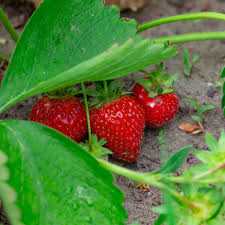
Potassium also contributes to the overall color and shelf life of strawberries. It helps improve the intensity of red pigment in the berries, enhancing their visual appeal. Additionally, potassium-rich fruits tend to have a longer shelf life, as it helps maintain their firmness and reduces the likelihood of post-harvest spoilage.
To ensure optimal berry development, it is important to provide strawberry plants with a sufficient supply of potassium. This can be achieved through the application of potassium-rich fertilizers or organic amendments. Regular soil testing can help determine the appropriate potassium levels and guide fertilization practices to optimize strawberry yield and berry quality.
The Role of Micronutrients
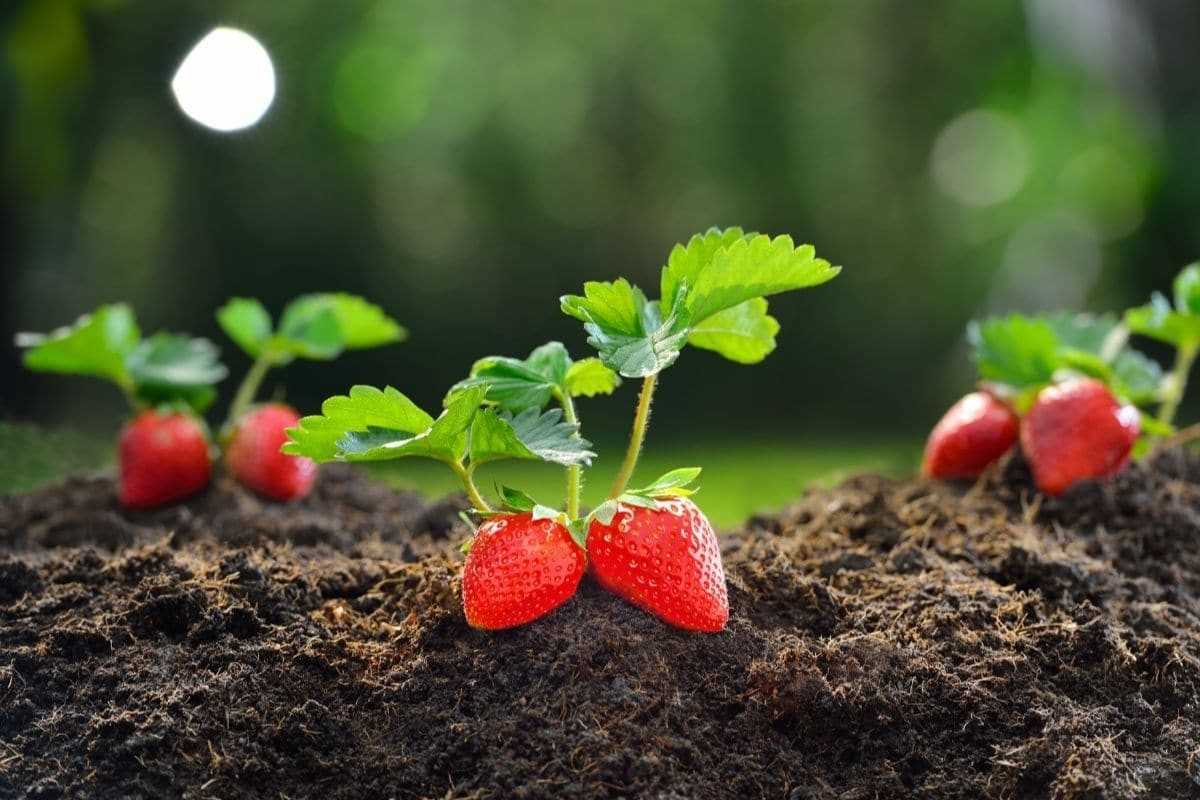
Micronutrients play a crucial role in the growth and development of strawberry plants. While macronutrients like nitrogen, phosphorus, and potassium are required in larger quantities, micronutrients are equally important, albeit in smaller amounts. These micronutrients are essential for various physiological processes within the plant, including enzyme activation, cell division, and photosynthesis.
Here are some important micronutrients and their roles in strawberry fertilization:
- Iron (Fe): Iron is responsible for the synthesis of plant pigments and is involved in energy transfer reactions. It also plays a crucial role in photosynthesis.
- Manganese (Mn): Manganese is essential for enzyme activation and chlorophyll formation. It also aids in the metabolism of nitrogen and carbohydrates.
- Zinc (Zn): Zinc is required for the synthesis of plant growth regulators and protein. It also plays a role in seed development and carbon dioxide fixation.
- Copper (Cu): Copper is involved in the formation of lignin, which provides structural strength to the plant. It also helps in the synthesis of certain enzymes.
- Boron (B): Boron is necessary for cell wall synthesis and pollen tube growth. It also aids in calcium uptake and carbohydrate metabolism.
In addition to these micronutrients, other micronutrients like molybdenum (Mo) and chlorine (Cl) are also required in small quantities for various physiological processes in strawberry plants.
| Micronutrient | Deficiency Symptoms |
|---|---|
| Iron (Fe) | Yellowing of leaves (chlorosis) with green veins |
| Manganese (Mn) | Interveinal chlorosis, leaf deformation |
| Zinc (Zn) | Stunted growth, small leaves |
| Copper (Cu) | Wilting, browning of leaf tips |
| Boron (B) | Brittle leaves, discolored stems |
Identifying and addressing micronutrient deficiencies through proper fertilization is essential for ensuring optimal strawberry growth and maximizing berry size. It is advisable to perform soil and plant tissue analysis to determine the nutrient requirements and make informed decisions about fertilization practices.
Timing and Application Techniques
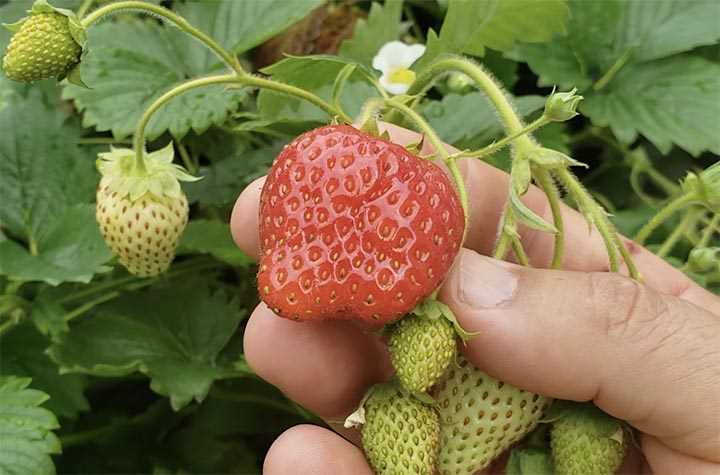
1. Pre-Planting Preparation
Prior to planting strawberries, it is important to prepare the soil and provide it with the necessary nutrients. This can be done by conducting a soil test to determine the nutrient levels and pH of the soil. Based on the results, amendments can be made to adjust the pH and provide any missing nutrients.
2. Pre-Bloom Application
Before the strawberry plants begin to bloom, a balanced fertilizer can be applied to provide a steady supply of nutrients. This can be done by broadcasting the fertilizer evenly over the strawberry beds and lightly incorporating it into the soil. It is important to follow the recommended application rates provided by the fertilizer manufacturer.
3. Bloom and Fruit Development
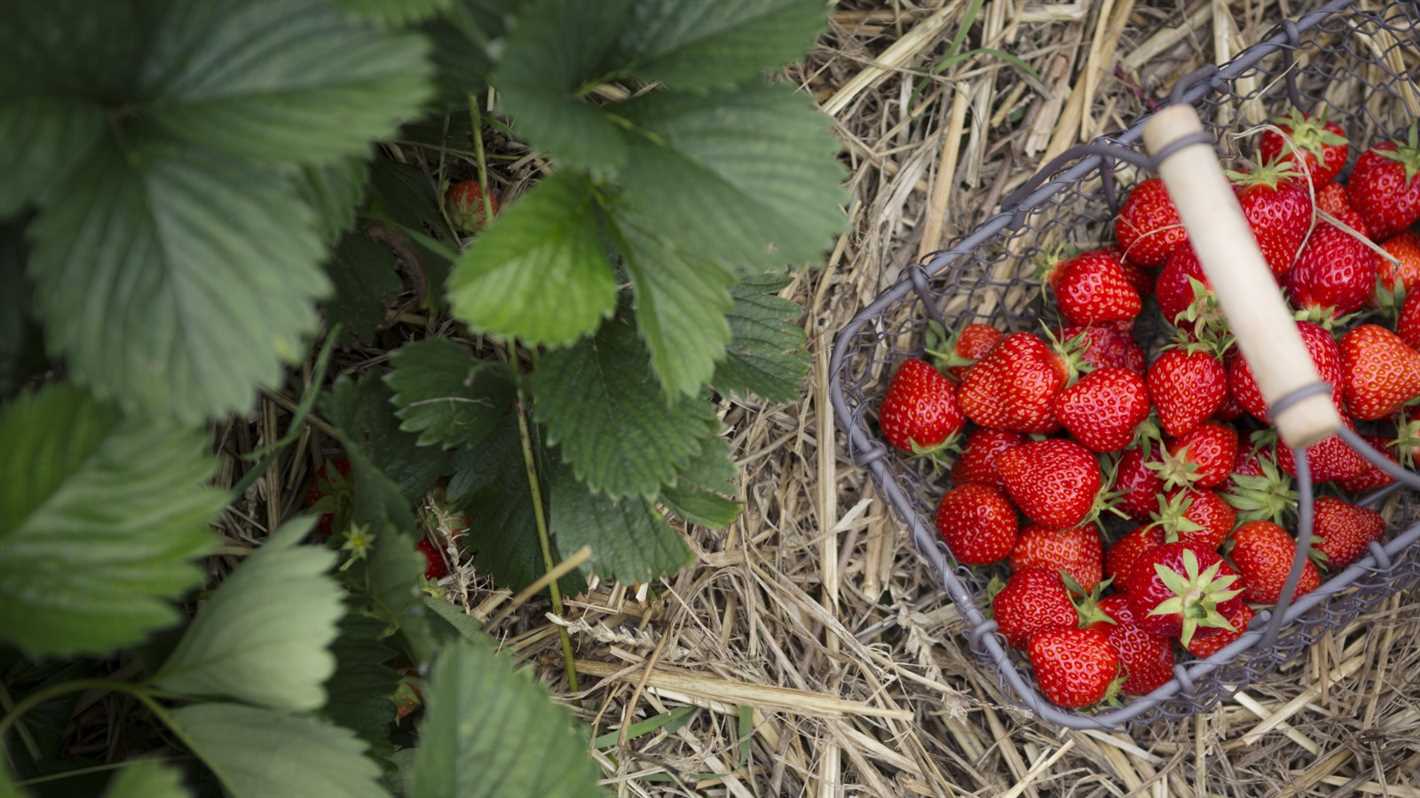
During the bloom and fruit development stage, it is important to provide the strawberries with additional nutrients to support the growth of big berries. This can be done by side-dressing the plants with a fertilizer high in potassium and phosphorus. The fertilizer can be applied in a band along the rows, avoiding direct contact with the plants.
Additionally, foliar sprays can be used to provide a quick supply of nutrients directly to the leaves. This can be done by mixing a water-soluble fertilizer with water and spraying it onto the foliage. It is important to follow the instructions provided by the fertilizer manufacturer for mixing ratios and application frequency.
4. Post-Harvest Care
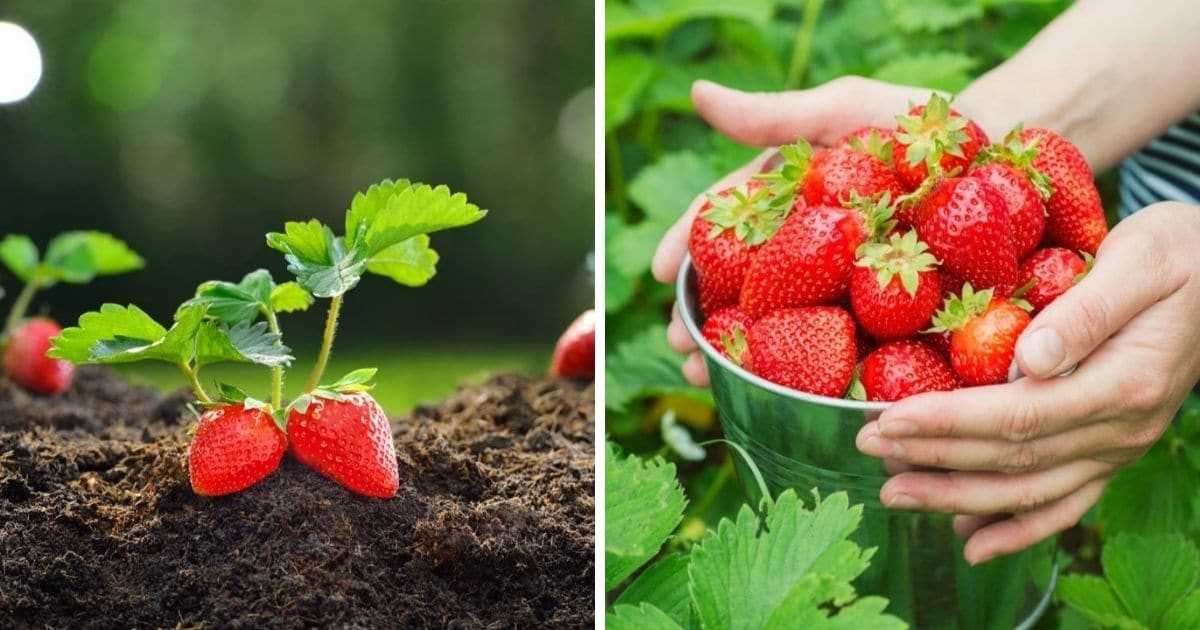
After harvesting the strawberries, it is important to replenish the nutrients in the soil for the next crop. This can be done by applying a balanced fertilizer to the strawberry beds and lightly incorporating it into the soil. The application rate should be adjusted based on the nutrient levels determined by a soil test.
5. Irrigation Techniques
Proper irrigation is crucial for the uptake of nutrients by the strawberry plants. It is important to provide the plants with a consistent water supply, avoiding both over-watering and under-watering. Drip irrigation or soaker hoses are recommended to deliver water directly to the root zone and minimize water loss through evaporation.
6. Mulching
Using mulch in strawberry beds can help conserve moisture, suppress weed growth, and regulate soil temperature. Organic mulches, such as straw or wood chips, can also slowly decompose and provide additional nutrients to the soil over time. Mulch should be applied after planting the strawberries and maintained throughout the growing season.
Question-answer:
What nutrients are essential for strawberry fertilization?
For optimal strawberry fertilization and bigger berries, several nutrients are essential. These include nitrogen, phosphorus, potassium, calcium, and magnesium. Nitrogen promotes plant growth, phosphorus helps with flower and fruit development, potassium enhances fruit quality and disease resistance, calcium improves fruit firmness, and magnesium aids in the production of chlorophyll.
How should nitrogen be applied for strawberry fertilization?
Nitrogen can be applied through various fertilizers, such as ammonium nitrate or urea. It is important to apply nitrogen in multiple doses throughout the growing season to support continuous plant growth and berry development. The initial application should be done in early spring, followed by additional applications during the fruiting stage.
What is the recommended phosphorus level for strawberries?
The recommended phosphorus level for strawberries is around 60-80 ppm (parts per million) in the soil. Phosphorus is crucial for flower and fruit development. If the phosphorus levels are low, it can result in poor flowering and reduced fruit production. Regular soil testing is recommended to monitor phosphorus levels and make necessary adjustments through fertilization.
Why is calcium important for strawberry fertilization?
Calcium is important for strawberry fertilization because it improves fruit firmness. Strawberries with sufficient calcium levels have firmer berries, which reduces post-harvest damage and extends shelf life. Calcium can be applied through foliar sprays or incorporated into the soil through fertilizers. It is particularly beneficial to apply calcium during fruit development to ensure optimal firmness.
Can excess fertilizer negatively affect strawberry berries?
Yes, excess fertilizer can negatively affect strawberry berries. Over-fertilization can lead to excessive vegetative growth at the expense of fruit development. It can also result in poor fruit quality, such as smaller-sized berries or berries with reduced flavor. It is important to follow recommended fertilization guidelines and regularly monitor plant health to avoid over-fertilization.







